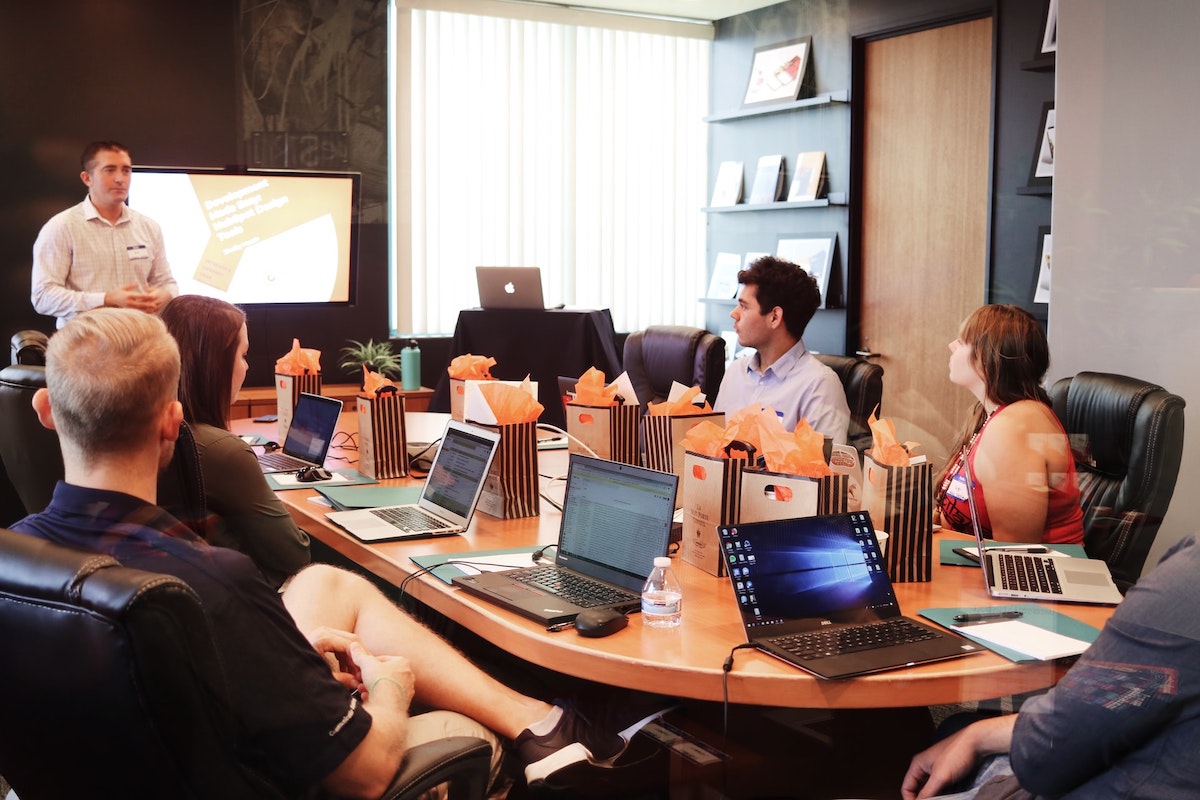Low enrollment got you down? Try our marketing plan for innovative Higher Ed Recruitment Pros.
Traditional Higher Education Marketing
At the beginning of the industrial age, effective marketing tactics for enrollment professionals were fairly straightforward. There were traditional methods universities could always use to attract more students and grow enrollment. These tactics included billboards, paying for a radio/tv ads, sending physical mail, hitting the road to visit high schools, and ensuring the institution enjoyed positive PR. There wasn’t much else a recruitment professional could do.Since the internet boom, however, the number of tools, strategies, and potential pitfalls have exploded in volume. Before the age of the internet, the number of ways that you could completely waste your budget was fairly few but now they seem endless. This has caused many admissions teams to “stick with what we have always done” with only small accommodations for the internet to avoid potentially risky new strategies without realizing that is actually one of the riskiest things you can do.
Traditional wisdom says:
- Hire a search company and pay them to perform an analysis of who your target students are (and how to appeal to them).
- Purchase hundreds of thousands of cold prospects from ACT, SAT, GRE, GMAT, and other providers in order to get qualified leads to fill your class.
- Deliver a steady stream of email blasts, physical mailers, and phone calls to these cold prospects.
- Attend College Fairs and make High School visits. Buy billboard space, especially at airports. (Can someone please show me the data on this one? I really don’t understand why so many institutions buy airport placements…)
- Shoot and place commercials for TV and the Radio.
- Run multiple digital media campaigns (Social Media, CPC, Search, Display, Mobile etc.).
If you have done your job right from August to January, then all the students you will need will commit as of May 1.
There is nothing inherently wrong with any of the strategies in the list above when they are done right, but can you spot what is missing from this playbook?
I was on the receiving end of an RFP late last year where an institution was looking for a vendor to provide digital marketing and name buying services and was ready to put a budget of $900,000 toward the effort. The institution had detailed requirements for media buying, campaign management, and lead scrubbing for name buys. What did this RFP and the list above have in common? They are both laser-focused on the crucial enrollment activities to drive traffic while seeming to completely lose sight of what to offer that traffic once they have their attention.
Breaking With Student Recruitment Traditions
Covid-19 turned the world upside down, and we cannot assume that we can return to the old recruitment paradigm as things (hopefully) calm down. For as long as most of us can remember the main call to action (CTA) for any marketing activity has simply been some permutation of “Apply Now”, “Learn More”, or “Contact Us”. Let’s take a closer look at each of our traditional CTA’s in Higher Education recruitment marketing:
- “Apply Now”: This CTA assumes that going to college is a foregone conclusion and that the prospect is ready to apply. Can we really pre-suppose that early in our relationship with a prospect (especially from a paid media campaign)? HALDA’s studies have shown that there are really important questions that students need answers to long before they are ready to apply (see below). Apart from that, it is no secret that campus shutdowns, increased education options, as well as decreasing demographics, make it increasingly unlikely that you will be able to go from “Hi” to “Apply” in just one click.
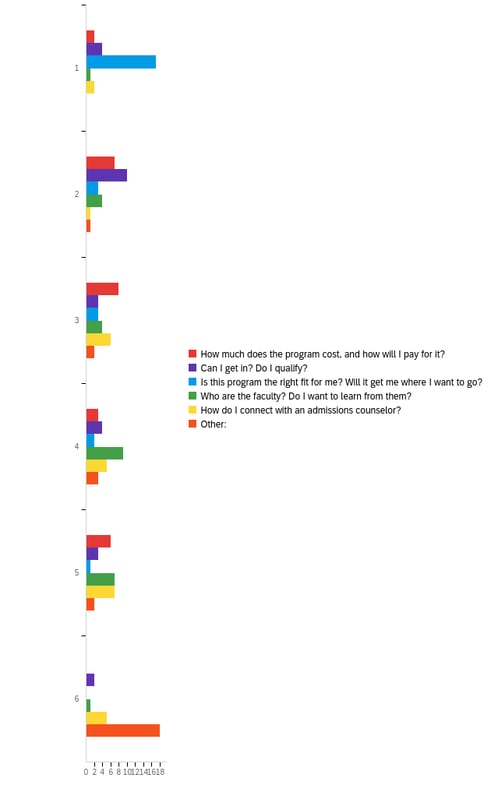
- “Learn More”: There may have been a time when your institution was the best, if not the only, source to learn more about your offerings. That is not true today. With a quick Google search a prospect is exposed to 20+ sources of “more information” about your programs. These sources often have more and better-organized content than your own website (like reviews, assessments, and value-added services).
- “Contact Us”: We have tried to make contacting admissions staff as easy as possible from mailto links to instant chat messengers on our sites. HALDA asked prospective students what the most helpful tools were on a website, and chat ranked dead last.
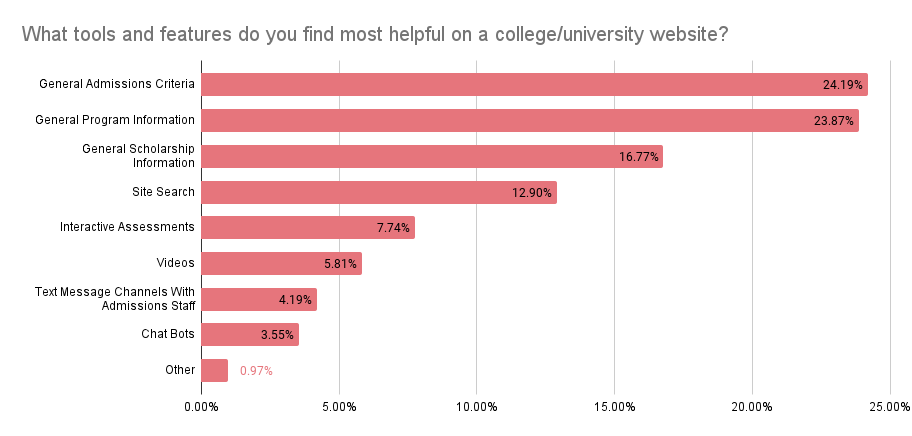
Source: HALDA 2021-2022 Student Research
Armed now with this data and insight, the innovative enrollment professional will begin to ask themself,
- How can I be more helpful to students?
- At the end of the day, every activity that I put my time and energy toward will drive students to my website. So why am I not putting more time and energy into the CTA’s, forms, and value exchanges that we host there?
- Why is conversion rate optimization not a standard line item in my playbook?”
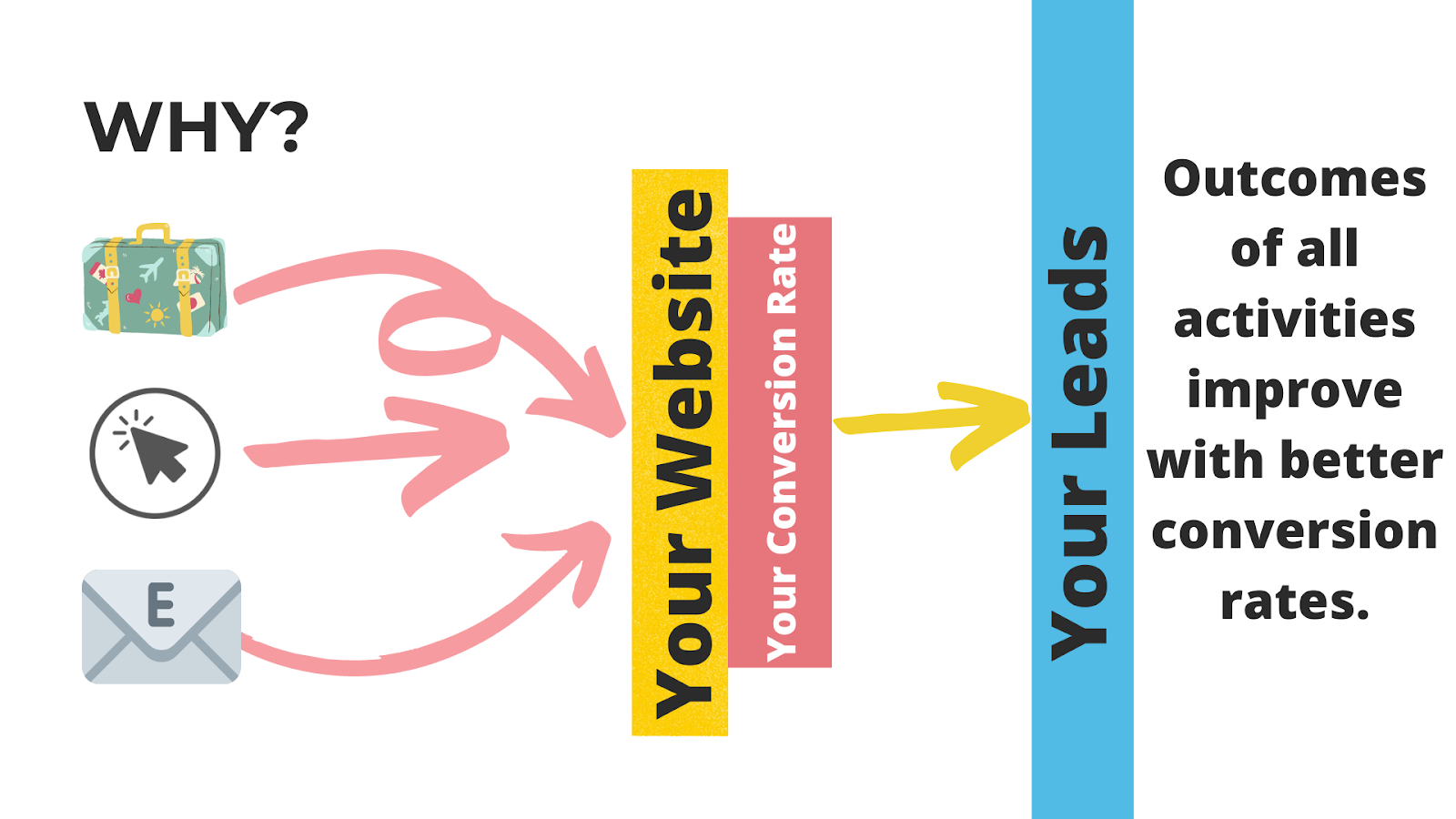
Interested prospective students are already browsing through admissions pages, and HALDA’s research shows that for nearly half of all prospective students their exploration of your website begins on day one of their research. Combine that research with the knowledge that HALDA’s data suggests that universities are missing 3 to 5 times more quality inquiries than what they are capturing with their current CTA’s, and the innovative enrollment marketer will start to prioritize their budget a bit differently.
The Innovative Enrollment Professional’s Higher Ed Marketing & Recruitment Plan
We talked earlier about marketing activities vs. value offers. Hopefully, it is becoming clear that our objective in this article is to convince you to prioritize crafting meaningful value exchanges before launching recruitment activities that simply say “Apply Now”. What’s the point in kicking off a new digital advertising campaign, if only a fraction of those students who visit your website ever take an action? You can get 3x more out of your budget with a little extra groundwork.
Here is a step-by-step guide of the actions you can take today in order to significantly improve your marketing plan for the coming year.
1. Understand Your Current Traffic
When it comes to optimizing your marketing plan, we always recommend you start at the top of the enrollment funnel. Look for the page(s) on your website where you get the majority of leads, and start there.
Starting there helps you see the greatest improvements with the least amount of time and effort. As you start to audit these top-of-funnel website pages, think through the important questions and moments that prospective students will have and plan your CTA's around these moments.
Using website analytics you can determine the pages driving most students to your website as well as the pages driving the most leads. In some cases, this will be the same page. If it’s not, you can use a behavior flow report (in Google Analytics) to understand how website visitors get from one page to another within your website.
.gif?width=2880&name=Screen%20Capture%20on%202022-02-01%20at%2011-54-53%20(1).gif)
The goal of this exercise is to better understand which headlines, CTAs, and pages to optimize first. The more you can zero in on the student journey, the more effective your optimization efforts will be. There may be some pages where “Apply Now” is the perfect CTA, however, you’re usually going to want to craft a call-to-action that gives the user specific value in exchange for any information.
2. Maximize Lead Conversions From Your Existing Traffic
More often than not your highest converting prospects are going to come from organic search. That’s because students searching for your university are already familiar with and interested in learning more. Start testing new CTA’s and value exchanges on the pages you identified in step 1, and see if they perform better than what had been there.
Analytics can tell you the pages on your website receiving the most organic traffic as well as what percentage of those visitors are converting into leads. You should also compare the conversion rate of organic visitors to the conversion rate from other lead sources, like direct and paid traffic for example (if you have ongoing paid media campaigns).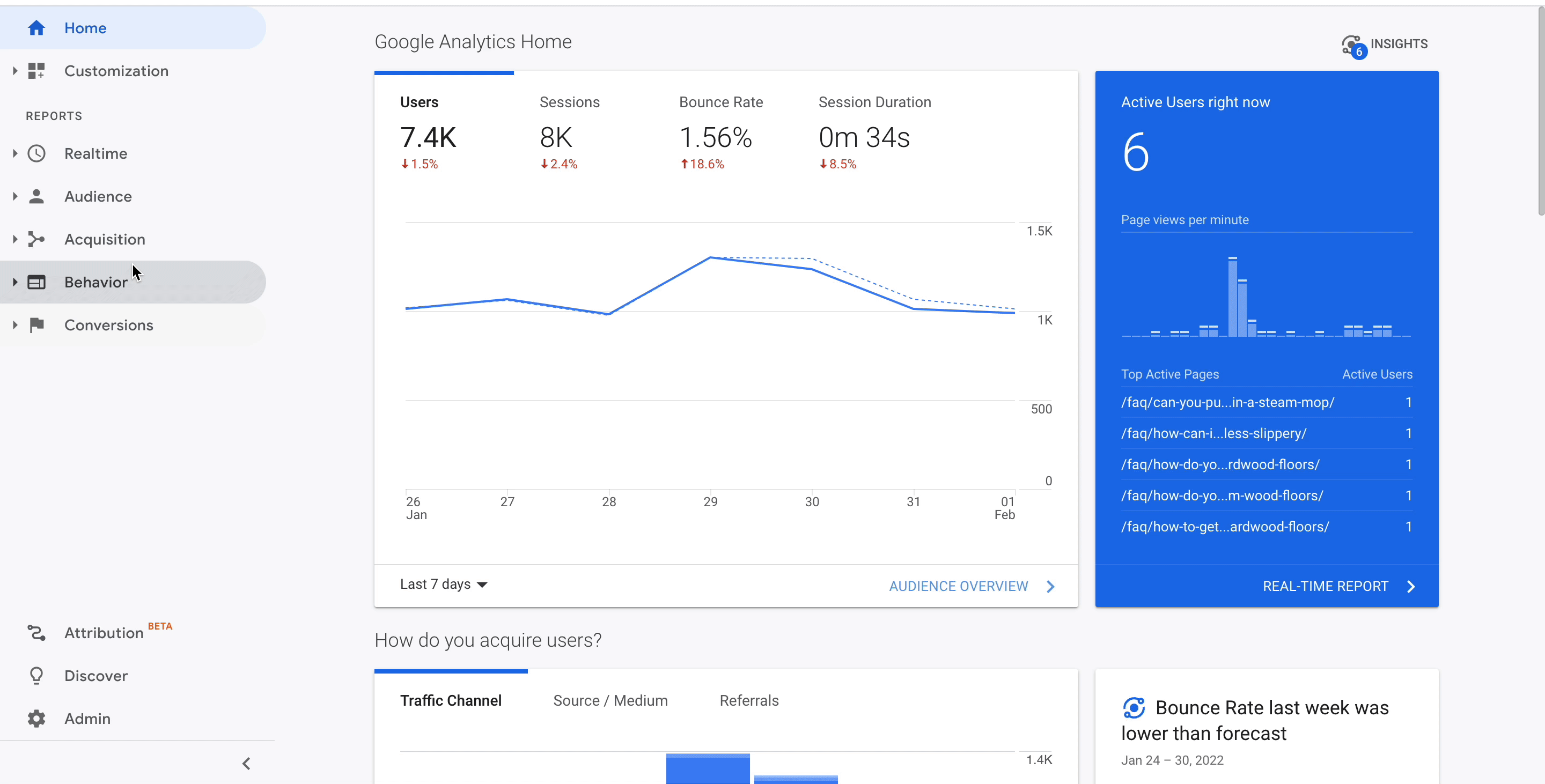
By capturing as much of your organic traffic as you possibly can, you’ll improve your total number of conversions without having to ask for more budget or get internal buy-in for lengthy web development projects. You will also set yourself up for success when you are ready to move on to step three because you will be driving traffic to a highly optimized page.
NOTE: At this point, you may be thinking “This sounds like a project for IT or some other department.” Don’t get scared. There are really easy plug-and-play software tools like HALDA that can help you deploy, test, and optimize new value offers on target pages quickly and easily. It only requires 1 quick copy-paste from IT to install, and then you will be off to the races.
3. Scale traffic.
Now that you better understand the student journey, the most important pages on your site, and how to best convert visitors into high quality leads in your enrollment pipeline, you are ready to start ramping up traffic with confidence that you will not be simply flushing valuable budget down the toilet of untrackable ROI., You are likely already familiar with the ways you can approach scaling traffic, but allow us to add our two cents to some of the most common strategies:
Email list buying
Purchasing lists of names for a few cents per row from ACT, SAT, GRE, GMAT etc. is a very common practice, and, to be fair, is a great way to be in front of a target audience that is thinking about continuing their education. However, if you have first optimized your own lead capture on your website before your purchase, you will find that you can scrub hundreds, and overtime thousands, of rows from these purchases because your most interested students will already be in your database.
When you buy lists from other providers please keep this word of caution in mind - Their business model is maximized by selling 1 student to as many universities as possible. I used to work for a third-party lead gen business, and I witnessed first-hand how this incentive structure resulted in the business sending off poorer and poorer quality leads over time. Selling the same student to 20 universities is bad for the students, bad for universities, and bad for the vendor’s business long term (even if they don’t realize it). I would use these types of sites as a last resort if you still need names after all other mechanisms are maximized.
Paid Media
Paid media campaigns are one of the most scalable sources of traffic for universities. Focus your efforts on campaigns driving measurable results. If you’re working with an agency that promises impressions rather than results (ie inquiries/leads), it might be time to rethink that partnership. Setting up events in analytics can help you avoid relying on an outcome that doesn’t support your internal goals.
If you haven’t already, set up retargeting campaigns. A retargeting campaign only shows ads to someone who’s already visited your website. These paid media campaigns are most effective because they rely on prospects already familiar with your brand and university. Once you’ve built these campaigns, you can create lookalike audiences that focus on users with similar demographic and psychographic qualities as those who are most likely to convert on your website.
In-person Events
While in-person events may not scale as easily as paid media, it doesn’t mean you should throw it out the window. It’s probably less expensive than ever to register for and get in front of potential students in the post-COVID-era. If you’ve always used in-person events then you don’t need to re-think your entire strategy. There’s something to be said for using a formula that works.
One way you could potentially improve in-person events is by measuring how many website visitors come from each event. By creating unique UTM parameters for each in-person event and turning the unique URL into a QR code, you’ll be able to measure traffic from each event in order to improve your field marketing every single year.
Quick Plug For HALDA
We are 100% confident that you will get 2 - 3 times more out of your budget if you follow the plan that we outlined above. Optimizing your pages for conversion has been made easy with our technology. HALDA’s Smart Forms are one of the easiest and most effective ways to systematically improve the conversion rate of your average website visitor, and we will help you launch your first A/B test for free. Just reach out, and we will get you going.

